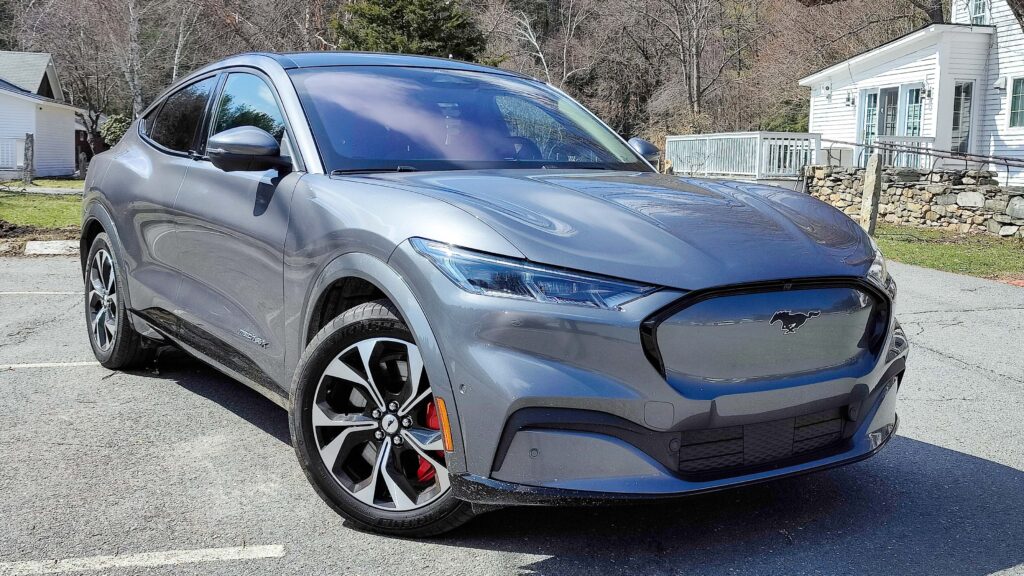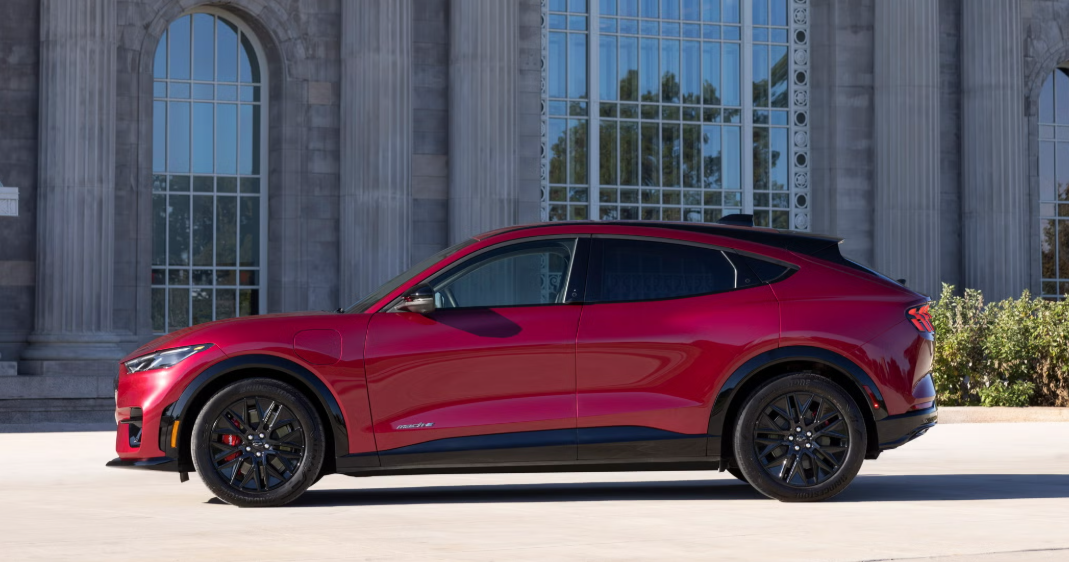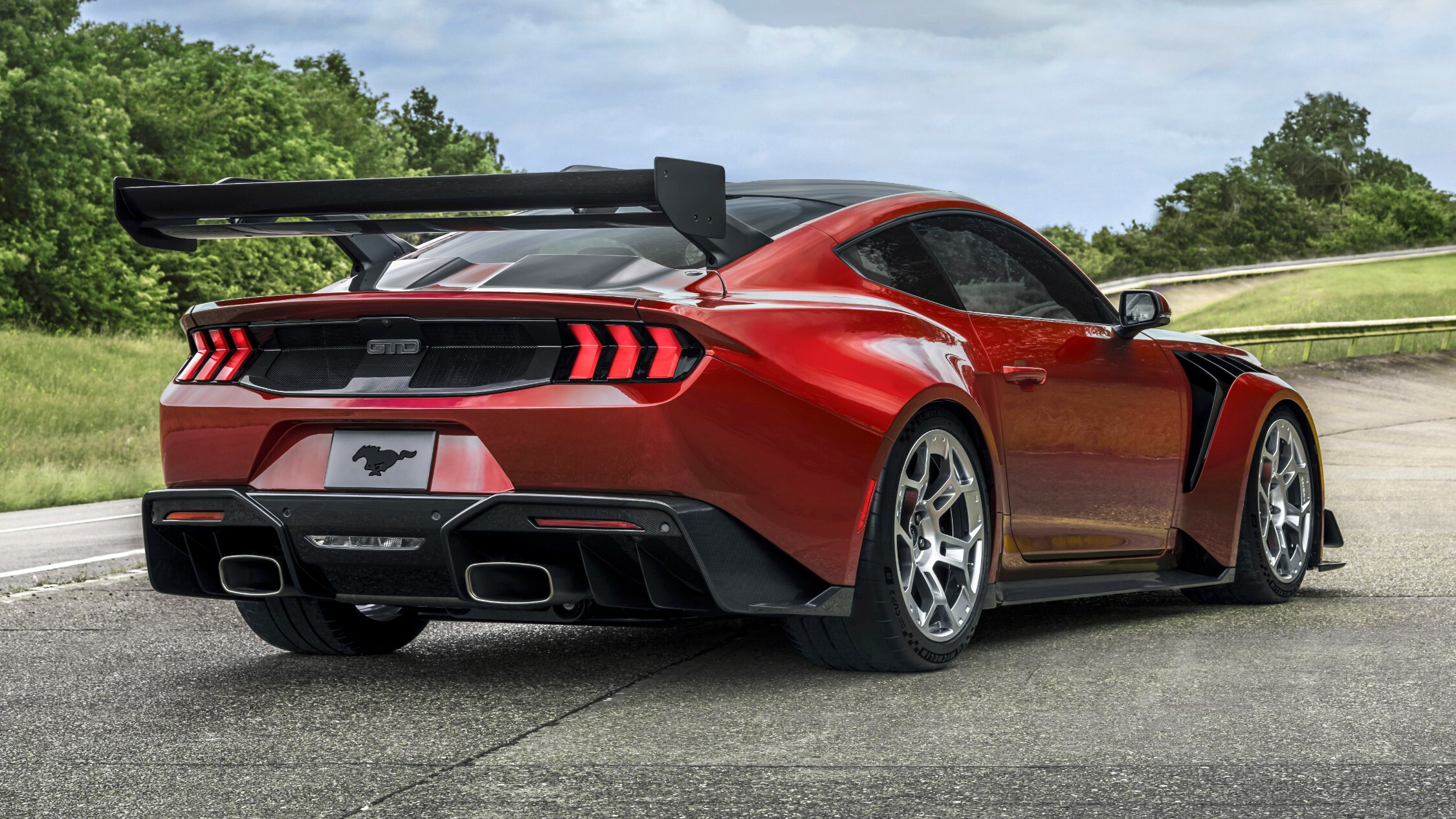What year did Ford Mustang get an SUV? The Ford Mustang got an SUV in 2020 with the introduction of the Ford Mustang Mach-E. This all-electric compact crossover SUV combined the Mustang’s performance legacy with the growing demand for electric vehicles, marking a significant shift for the iconic brand.
When people think of the Ford Mustang, they typically envision a powerful, aggressive muscle car—sleek, fast, and iconic. Ford’s Mustang has been synonymous with high-performance sports cars for decades. However, Ford shocked the automotive world by introducing an SUV under the Mustang nameplate. This bold move raised a lot of questions: When did the Mustang get an SUV? How did it happen, and why did Ford make this decision?
The answer comes with the introduction of the Ford Mustang Mach-E—an all-electric SUV that defied tradition while honoring the Mustang legacy. This game-changing move reflected the increasing demand for electric vehicles (EVs) and the global shift toward more environmentally sustainable transportation options.
In this in-depth guide, we’ll explore the story behind the Mustang Mach-E, the significance of Ford’s decision to create an SUV under the Mustang name, and how this vehicle is changing the narrative for the Mustang brand.

Contents
The Birth of the Mustang Mach-E: A New Era for Ford
The big question on everyone’s mind is: when did Ford Mustang get an SUV? The answer is in 2020 when Ford unveiled the Mustang Mach-E—the first-ever electric SUV under the Mustang name. On November 17, 2019, Ford introduced the world to the Mach-E as an all-electric vehicle that is part of its larger strategy to shift towards sustainability and meet the demands of a new generation of drivers who wanted the performance associated with the Mustang, but also the practicality of an electric SUV.
The Mach-E’s unveiling was as much about Ford’s ambitious vision for electric vehicles as it was about honoring the Mustang’s 55-year legacy. The Ford Mustang Mach-E was designed to blend the performance and emotion of the Mustang sports car with the practicality of an SUV, creating an electric vehicle that could be accessible, fun to drive, and environmentally friendly.
Ford made it clear that the Mach-E was not just an SUV but also a reinvention of the Mustang name—a symbol of performance, heritage, and future innovation in the electric vehicle space.
Why Did Ford Create an SUV Under the Mustang Name?
One might wonder why Ford would choose to launch an electric SUV under the Mustang name—a name historically associated with muscle cars. The decision stemmed from a few key factors:
- Performance Legacy: Ford wanted to retain the performance heritage of the Mustang. The Mustang is known for its powerful engines and thrilling driving experience. By associating the Mach-E with the Mustang, Ford ensured that the SUV would carry the same DNA of high performance, even in the electric vehicle (EV) market.
- Brand Recognition: The Mustang name is synonymous with American automotive culture and passion. Ford recognized that by using the Mustang nameplate for their first-ever electric SUV, they would leverage the Mustang’s iconic status to attract both Mustang enthusiasts and new EV buyers.
- Electrification Strategy: As more automakers shift toward producing electric vehicles, Ford recognized that they needed to make a bold move into the EV market to stay competitive. The Mustang Mach-E is part of Ford’s larger electrification strategy, which includes introducing fully electric and hybrid models across various vehicle segments, from trucks to SUVs and sports cars.
Ford’s decision to brand an electric SUV under the Mustang name reflects both the evolution of the Mustang brand and the future of the automotive industry, which is rapidly moving towards electric mobility. With the Mach-E, Ford was making a statement that an electric future didn’t have to mean sacrificing performance or driving excitement.

Design and Performance of the Mustang Mach-E
The Ford Mustang Mach-E was designed to push boundaries and offer a fresh take on the iconic Mustang, while also meeting the growing demand for electric SUVs. Let’s take a closer look at its design and performance:
Performance: Power and Speed
The Mustang Mach-E features impressive performance specifications that highlight its Mustang roots. Unlike traditional SUVs, the Mach-E offers powerful acceleration and a thrilling driving experience. Key performance highlights include:
- Acceleration: The Mach-E GT Performance Edition can go from 0 to 60 mph in just 3.5 seconds, showcasing its blistering speed and powerful electric motors.
- Power Output: The Mach-E is available in different configurations, offering varying power outputs. The standard models provide up to 266 horsepower, while the GT versions can go up to 480 horsepower.
- Driving Range: The Mach-E offers impressive electric range—with certain configurations providing up to 300 miles on a single charge. This makes it competitive in the EV market, where range anxiety has often been a concern for potential buyers.
Handling and Driving Experience
The Mach-E delivers a fun-to-drive experience, which is at the heart of the Mustang brand. Available in both rear-wheel-drive (RWD) and all-wheel-drive (AWD) variants, the Mach-E is engineered to handle curves, tight corners, and highways with ease. The low center of gravity (due to its battery placement) enhances handling and provides a solid driving feel.
Cutting-Edge Technology
The Mach-E comes equipped with modern technology, including Ford’s SYNC 4A system, a large touchscreen interface, voice-activated controls, and over-the-air software updates. Additionally, the SUV features advanced driver-assist technologies, making it a standout in terms of both safety and convenience.
Design: Combining Style and Functionality
While performance is key, design plays a significant role in the Mustang Mach-E. Ford has ensured that the Mach-E delivers an attractive, sporty exterior that reflects the Mustang’s distinctive styling while offering the spaciousness and functionality of an SUV.
- Sleek, Modern Look: The Mach-E features clean lines and a sculpted body, with a coupe-like silhouette and aggressive front-end styling that echoes the Mustang sports car.
- Interior: The interior of the Mach-E blends modern luxury and functionality, offering plenty of space for passengers and cargo. The cabin features high-quality materials, a minimalist design, and a large, 15.5-inch vertical touchscreen that controls most of the car’s features.
- Cargo Space: The Mach-E provides ample cargo space, offering both rear and front trunks for additional storage—especially useful given its electric design.
Market Reception and the Future of the Mustang Mach-E
The introduction of the Mustang Mach-E marked a bold shift in Ford’s strategy, combining the iconic Mustang performance with the practicality of an electric SUV. Let’s explore how the market received this new addition and what the future holds for the Mach-E and Ford’s electrification plans.
An Overwhelmingly Positive Reception
When the Mustang Mach-E hit the market in December 2020, it received a warm welcome from both critics and consumers. It was praised for its design, performance, and technology, establishing itself as a worthy electric SUV. The Mach-E won several awards, including the 2021 North American Utility Vehicle of the Year™, which solidified its standing in the competitive EV market.
The vehicle also played a crucial role in changing the perception of electric vehicles. By carrying the Mustang name, Ford demonstrated that EVs could be fun to drive, stylish, and performance-oriented, breaking away from the stereotypes of slow, mundane electric cars.
Expanding Ford’s Electrification Strategy
The success of the Mach-E has led Ford to expand its electric vehicle offerings, with plans for more electric vehicles across different segments, including the Ford F-150 Lightning (the electric version of their popular pickup truck) and the upcoming Ford electric Transit van.
The Mach-E marks just the beginning of Ford’s transformation, as they push forward with an electric future. With more models set to hit the market, Ford is investing heavily in electric mobility and green technology.
Related Article
Mustang Mach E Towing Capacity
Mustang Mach E High Voltage Battery Warning
Ford Mustang Mach-E Recall
Frequently Asked Questions
Here are some FAQs about what year did ford mustang get an suv –
Q1: When did Ford Mustang get an SUV?
A1: The Ford Mustang got an SUV in 2020, when the Mustang Mach-E was launched as an all-electric compact crossover SUV.
Q2: Is the Ford Mustang Mach-E an electric vehicle?
A2: Yes, the Mustang Mach-E is a fully electric vehicle that combines the Mustang’s performance heritage with the practicality and sustainability of an electric SUV.
Q3: How much horsepower does the Mustang Mach-E have?
A3: The Mustang Mach-E offers up to 480 horsepower in the GT Performance Edition. Lower trims provide up to 266 horsepower.
Q4: What is the driving range of the Mustang Mach-E?
A4: The driving range of the Ford Mustang Mach-E varies depending on the model and configuration, with some versions offering up to 300 miles on a single charge. Read more about How to Charge Mustang Mach E.
Q5: What is the starting price of the Ford Mustang Mach-E?
A5: The starting price of the Ford Mustang Mach-E is around $43,000, depending on the trim and configuration.
Conclusion
Ford’s bold decision to introduce the Mustang Mach-E marks a significant milestone in the evolution of the Mustang brand. The year 2020 will be remembered as the year Ford Mustang embraced an SUV—bringing its legacy of performance, power, and style to the electric vehicle market. With its cutting-edge technology, impressive driving range, and striking design, the Mach-E represents a glimpse into the future of electric mobility.
As Ford continues to innovate and expand its electric vehicle lineup, the Mustang Mach-E will undoubtedly remain at the forefront of the brand’s efforts to redefine the future of driving. The Mach-E not only enhances Ford’s reputation as a leader in performance and innovation but also helps pave the way for a more sustainable future in the automotive industry.




